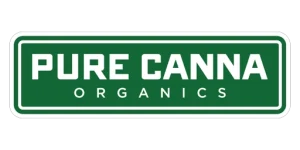How to Make CBD Isolate: A 2025 Step-by-Step Guide
CBD isolate is the purest form of cannabidiol (CBD)—a white crystalline powder that’s 99%+ pure CBD with zero THC. It’s commonly used in tinctures, edibles, topicals, and wellness products.
If you’re curious about how to make CBD isolate, this guide will walk you through the process from hemp extraction to crystallization.
What Is CBD Isolate?
CBD isolate is a refined extract of the hemp plant where all other cannabinoids, terpenes, and plant materials are removed. It’s ideal for:
- THC-free products
- Precise dosing
- Custom CBD formulations
How to Make CBD Isolate: Step-by-Step Process
Step 1: Hemp Biomass Extraction
Start by extracting crude hemp oil from the plant material using one of the following methods:
| Extraction Method | Pros | Cons |
|---|---|---|
| CO2 Extraction | Clean, solvent-free | Expensive equipment |
| Ethanol Extraction | Cost-effective | May need additional filtration |
Step 2: Winterization
Winterization removes fats, waxes, and lipids from the crude oil.
Process:
- Mix crude oil with food-grade ethanol
- Freeze at -20°C to -80°C for 24–48 hours
- Use filter paper or Buchner funnel to remove solids
Step 3: Decarboxylation
Convert CBDa (acid form) into active CBD by heating:
- Temperature: ~100–120°C
- Time: 30–60 minutes
Step 4: Distillation
Use short path or wiped film distillation to further purify the oil. This process separates:
- CBD
- Minor cannabinoids
- Plant impurities
- Terpenes
Step 5: Crystallization
CBD isolate is formed through crystallization using solvents like pentane or heptane.
Process:
- Dissolve purified CBD oil in the chosen solvent
- Cool the solution gradually to form CBD crystals
- Filter out the crystals
- Dry the crystals in a vacuum oven to remove residual solvents
Step 6: Testing & Purity Verification
Send the final product to a third-party lab for testing:
- CBD purity (should be 99% or higher)
- THC compliance (non-detectable THC)
- Residual solvent analysis
Equipment Needed
- Closed-loop extraction system
- Ethanol or CO2 extraction machines
- Rotary evaporator
- Vacuum oven
- Buchner funnel & filtration setup
- Crystallization reactor (optional for large scale)
Is Making CBD Isolate at Home Safe?
CBD isolate production requires laboratory conditions. Working with:
- Solvents like ethanol, pentane, or heptane
- Precise temperature control
- Professional extraction equipment
Because of the safety risks (flammable solvents, chemical exposure, compliance issues), making CBD isolate is typically not recommended for home production unless you are a licensed processor.
Why Choose CBD Isolate?
- THC-Free – Compliant with drug testing or THC-restricted regions
- Versatile Use – Edibles, topicals, tinctures, and cosmetics
- Consistent Dosing – No entourage effect, pure CBD only
Final Thoughts
How to make CBD isolate?
It’s a multi-step process involving extraction, winterization, distillation, and crystallization. The result is a 99%+ pure CBD powder used across the health and wellness industries.

